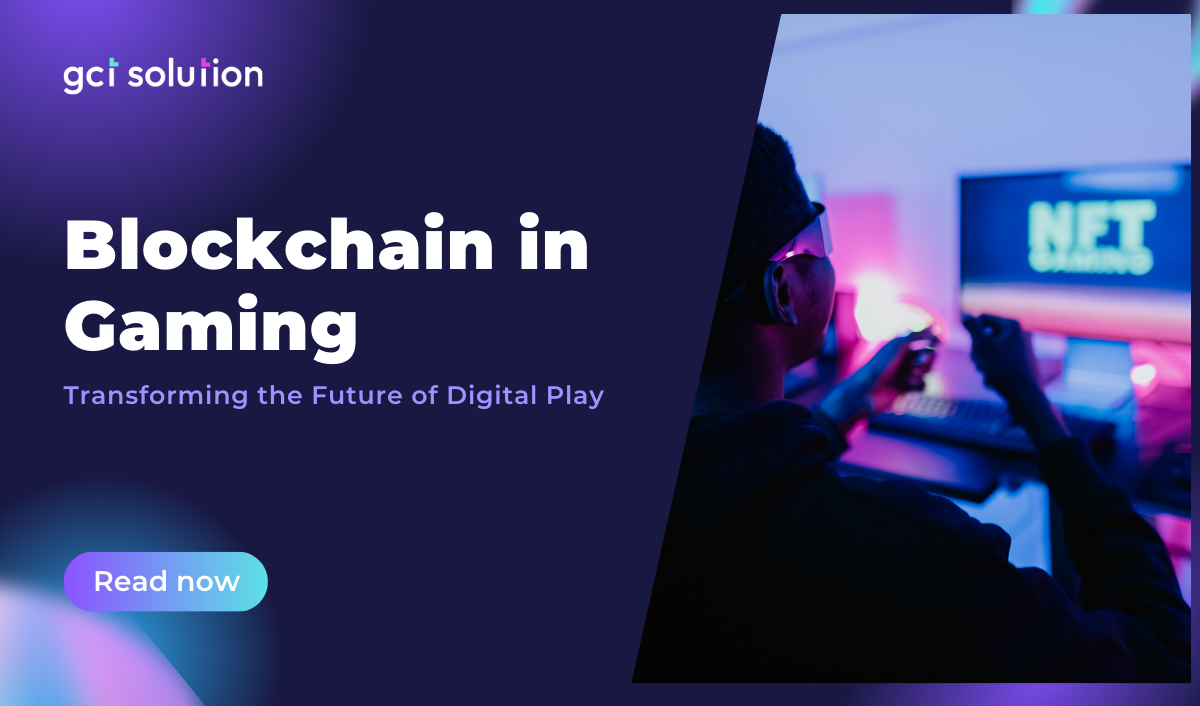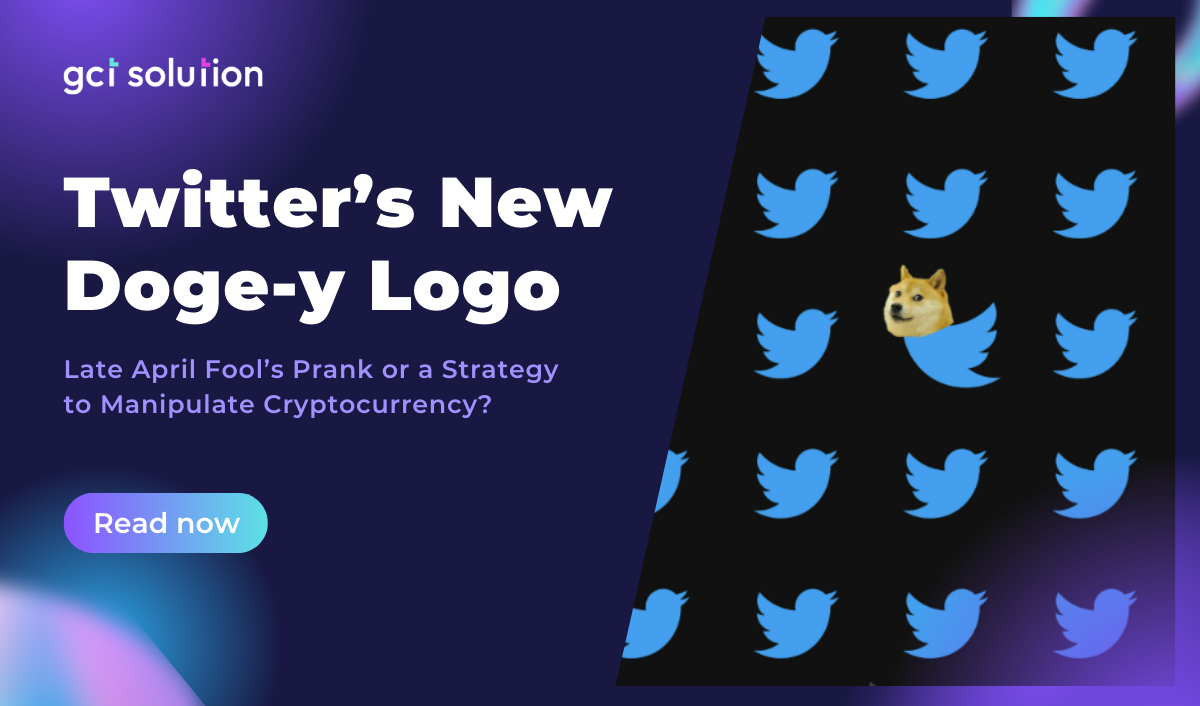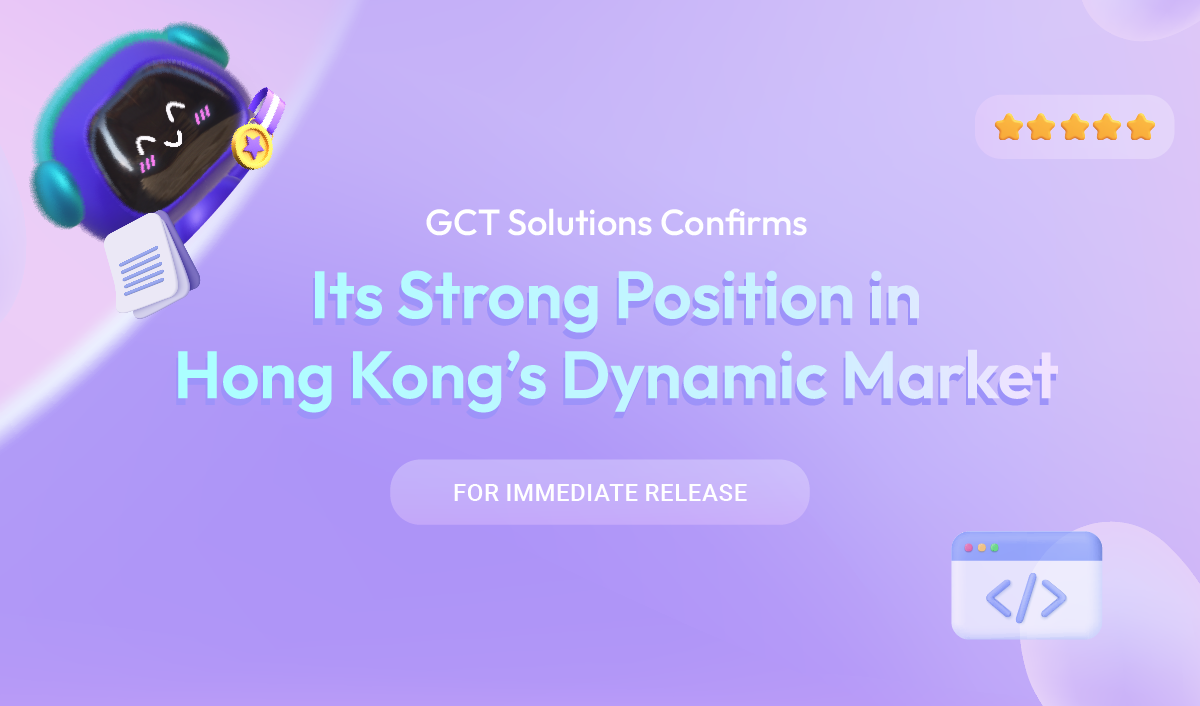Blockchain in Gaming: Transforming the Future of Digital Play
The gaming industry has long been a playground for innovation, but few technologies have the potential to revolutionize the sector as fundamentally as blockchain. Blockchain gaming is redefining how games are played, owned, and monetized. From giving players true ownership of in-game assets via NFTs to decentralizing control and governance through DAOs (Decentralized Autonomous Organizations), blockchain is changing the way gamers and developers interact with virtual worlds.
As blockchain gaming rapidly grows, with market estimates suggesting it could reach between $65 to $90 billion by 2030, its potential to alter the future of digital entertainment is undeniable. This blog will explore the profound impact blockchain is having on gaming, its key benefits, the challenges it faces, and where the industry might be headed.
1. What is Blockchain Gaming?
Blockchain gaming refers to video games that incorporate blockchain technology to enhance aspects such as ownership, transparency, and decentralization. At its core, blockchain gaming allows players to truly own digital assets within a game, something traditional gaming cannot offer. These assets are often represented as NFTs, which are unique, non-fungible tokens stored on a blockchain that players can buy, sell, or trade.
In a traditional game, players can purchase in-game items like skins, weapons, or characters. However, these assets are often controlled by the game developers, and players do not truly "own" them. If the game shuts down, those assets disappear. With blockchain, players can retain ownership of these items across different games or platforms, offering both permanence and a tangible value.
Current Market Overview
As of 2024, blockchain gaming accounts for a significant portion of Web3 activity, comprising roughly 28% of all unique active wallets (UAWs) in the space. Key platforms like Ronin, Polygon, and Ethereum dominate the market, each supporting different blockchain-based games and ecosystems. Notable games such as "Axie Infinity" and "Gods Unchained" are leading the charge, providing players with opportunities to earn cryptocurrency through gameplay.
Blockchain vs. Traditional Gaming
The difference between blockchain and traditional gaming is stark. In traditional games, developers control all in-game assets and transactions, limiting player ownership and monetization. Blockchain, on the other hand, decentralizes control, giving players autonomy and the ability to monetize their gaming experiences. Moreover, blockchain ensures transparency through its distributed ledger, allowing players to verify transactions and prevent cheating.
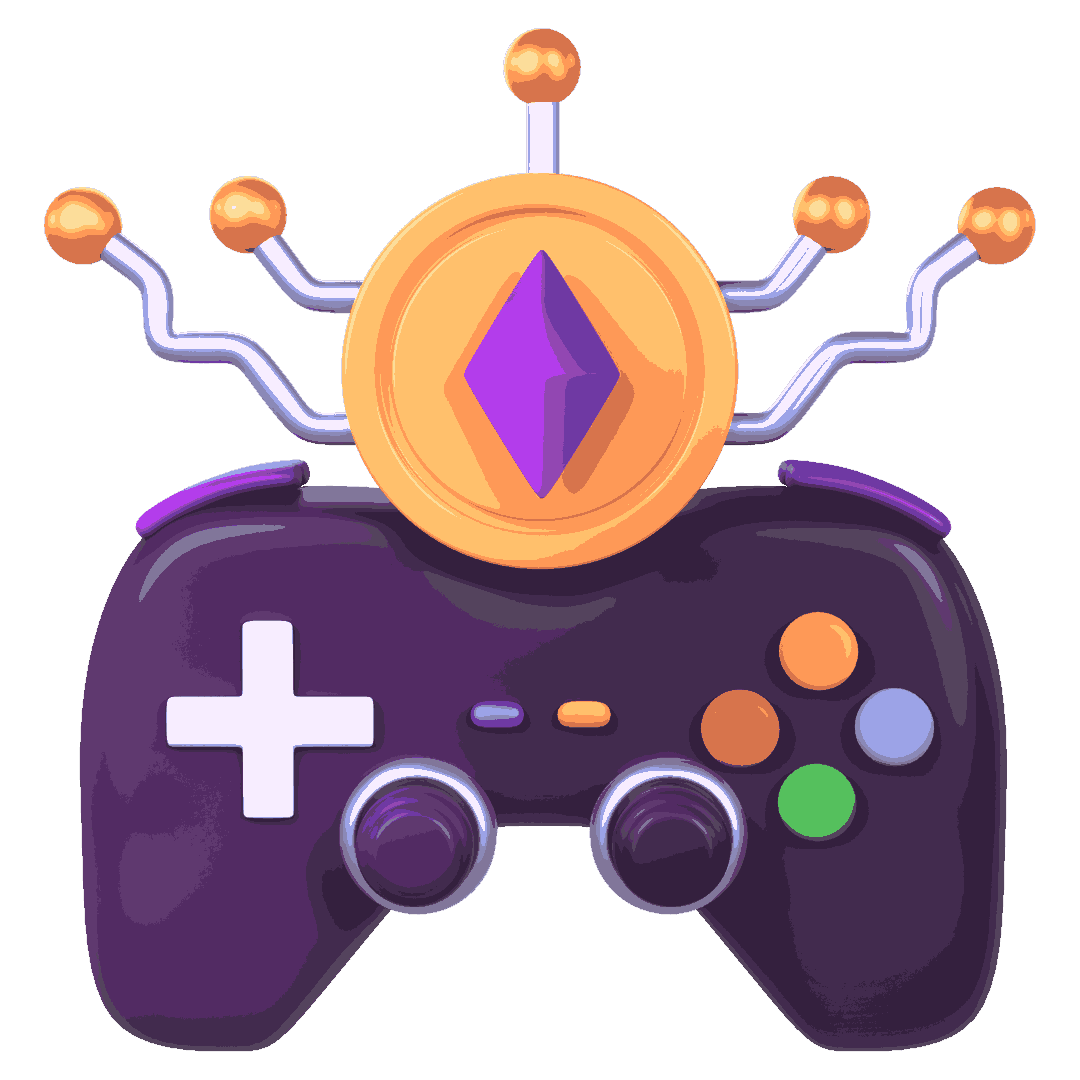
2. Key Benefits of Blockchain in Gaming
Blockchain technology offers numerous advantages to both players and developers, fundamentally changing the gaming landscape. Let’s dive into the most significant benefits:
Ownership and Monetization of Assets
One of the most exciting features of blockchain in gaming is the ability for players to truly own and monetize their in-game assets. These assets, often represented as NFTs, can be anything from characters and skins to weapons and virtual land. Because these NFTs exist on a blockchain, players can buy, sell, and trade them outside of the game, often for real-world money.
For example, in "Axie Infinity," players can breed, battle, and trade creatures known as Axies, each represented as an NFT. The game's play-to-earn (P2E) model allows players to earn cryptocurrency, which can be exchanged for traditional currency.
You may also like this blog:
The Ultimate Guide to Asset Tokenization: Unlocking New Financial Horizons
Decentralization and Player Control
Blockchain decentralizes game ownership and governance. This means that instead of a single company controlling the game’s mechanics, players have a say in its development. Through DAOs, players can vote on game updates, rules, and economic changes. This player-driven approach encourages engagement and loyalty, as users feel a sense of ownership and participation in the game’s evolution.
Play-to-Earn (P2E) Models
Blockchain has introduced entirely new business models, such as play-to-earn, where players are rewarded with cryptocurrency for their in-game actions. P2E games like "Axie Infinity" and "DeFi Kingdoms" allow players to make real money through gameplay, creating economic opportunities for gamers worldwide.
In addition to P2E models, blockchain also enables play-to-own (P2O) concepts, where players not only earn assets but can also truly own them, gaining full control over their virtual economies. This introduces more flexibility and longevity to the gaming experience.
Transparency and Security
Blockchain technology ensures that all transactions and in-game activities are recorded on an immutable ledger, guaranteeing transparency. This makes it impossible for players to cheat the system, as all actions are verifiable via cryptography. Moreover, the decentralized nature of blockchain reduces the risk of server hacks or game disruptions since no single entity controls the entire system.
3. Challenges and Limitations of Blockchain Gaming
Despite its many benefits, blockchain gaming faces several challenges that developers and players must navigate. Some of the most pressing issues include scalability, regulatory hurdles, and user experience barriers.
Scalability and Transaction Fees
One of the key technical limitations of blockchain technology is scalability. As blockchain networks grow, they struggle to handle the high transaction volumes required for online gaming. This often leads to slow transaction times and high fees, especially on networks like Ethereum. Developers are exploring alternative solutions like layer-2 scaling and sidechains, but these are still in development.
Regulatory and Legal Hurdles
The regulatory environment for blockchain and cryptocurrency remains unclear in many regions, creating potential risks for game developers and players alike. Governments are still determining how to classify digital assets and blockchain transactions, which adds a layer of uncertainty. Developers must also be cautious about complying with different legal frameworks, which can vary greatly between countries.
User Experience (UX) Barriers
Blockchain games often require players to have a basic understanding of cryptocurrency and blockchain technology, which can be a major barrier for new users. Setting up crypto wallets, managing private keys, and conducting blockchain transactions can be daunting for players unfamiliar with the technology. Until these user experience issues are addressed, mass adoption may be difficult.

4. The Role of NFTs in Blockchain Gaming
Non-fungible tokens (NFTs) have become a game-changer in the blockchain gaming ecosystem. By enabling true ownership of digital assets, NFTs allow players to have full control over in-game items such as characters, skins, weapons, and even virtual land. These items can be traded on NFT marketplaces for real money, giving players the potential to profit from their time and investment in games.
Digital Collectibles and Ownership
In traditional gaming, players spend money on in-game items but don't actually "own" them. Game developers retain full control, and players can lose access to their assets if a game shuts down or if their account is banned. NFTs eliminate this problem by giving players verifiable ownership of their digital assets on a blockchain, which means they can use, trade, or sell these items even outside the game.
For instance, "CryptoKitties" was one of the first blockchain games to introduce NFTs, allowing players to collect, breed, and trade unique digital cats. Each CryptoKitty is an NFT, meaning that no two are exactly alike, and players can sell them for cryptocurrency. This concept of digital collectibles has since expanded to other games, where players can own everything from virtual real estate to exclusive skins.
Notable Blockchain Gaming Titles Using NFTs
Several popular blockchain games have embraced NFTs to enhance player experiences and create new economic opportunities. For example:
- "Axie Infinity": Players can collect and battle creatures known as Axies, each represented as an NFT. These Axies can be traded or sold on the blockchain, and players can earn cryptocurrency through gameplay.
- "Gods Unchained": A card-based strategy game where each card is an NFT. Players can trade cards freely and even earn rewards based on their card decks and performance.
- "Decentraland": A virtual world where players can buy, sell, and develop virtual real estate, all represented as NFTs.
Economic Potential of NFTs in Games
NFTs add a layer of economic complexity to gaming, enabling players to generate income through in-game activities. Players who own rare NFTs can sell them for a profit, while developers can earn royalties from secondary sales of their digital assets. This not only incentivizes gamers but also creates a sustainable revenue model for developers. For example, a rare NFT weapon or character in a popular blockchain game might fetch thousands of dollars on the open market, giving both players and developers new ways to monetize gaming experiences.
5. Blockchain Gaming Ecosystem: Key Players and Platforms
The blockchain gaming ecosystem is rapidly evolving, with several key platforms and games leading the charge. As the technology becomes more sophisticated, new platforms are emerging, providing developers with the tools to create decentralized games and giving players access to innovative gaming experiences.
Leading Blockchain Platforms for Gaming
Some of the most popular blockchains in the gaming sector include:
- Ethereum: One of the first blockchains to support decentralized applications (dApps) and NFTs, Ethereum is home to several blockchain games, including "CryptoKitties" and "Gods Unchained." However, Ethereum’s scalability issues and high transaction fees have prompted developers to explore alternatives.
- Polygon: A layer-2 solution that builds on Ethereum, Polygon is designed to solve Ethereum’s scalability challenges. It is now home to numerous blockchain games, offering lower transaction fees and faster speeds.
- Ronin: Developed specifically for "Axie Infinity," Ronin is an Ethereum sidechain that provides fast transactions and low fees, making it a popular platform for blockchain games.
These platforms, along with others like Solana and Flow, are helping to create the infrastructure necessary for blockchain gaming to thrive.
Top Blockchain Games and Their Success Stories
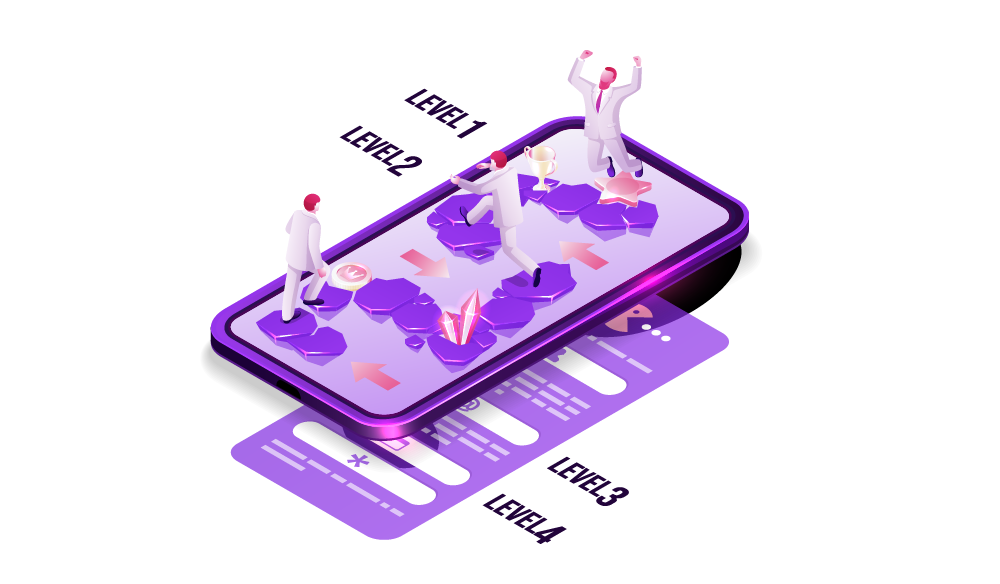
Some blockchain games have managed to break through to mainstream audiences, offering players innovative gameplay mechanics combined with the benefits of decentralized ownership. Here are a few examples:
- "Axie Infinity": This game has become synonymous with the play-to-earn (P2E) model, allowing players to earn cryptocurrency by battling, breeding, and trading Axies. The game has created real economic value for players, particularly in countries where some players earn a living from the game.
- "Gods Unchained": A competitive card game where players own their decks as NFTs, "Gods Unchained" has gained popularity due to its strategic gameplay and its marketplace, where players can trade cards freely.
- "Guild of Guardians": A mobile role-playing game (RPG) that leverages blockchain to give players ownership over their characters and items. The game has seen rapid growth and is a prime example of the hybrid model, combining traditional gameplay with blockchain technology.
Hybrid Models Combining Traditional and Blockchain Games
One of the emerging trends in blockchain gaming is the combination of traditional game mechanics with blockchain technology. Developers are adopting hybrid models that blend the familiarity of traditional gaming with the decentralized features of blockchain. For example, some games allow players to experience traditional gameplay but use blockchain for item ownership and transactions, creating a more seamless user experience.
This approach is helping to bridge the gap between blockchain and traditional gaming, attracting more mainstream players who may be hesitant to dive into fully decentralized games.
6. Future Trends and Opportunities in Blockchain Gaming
The future of blockchain gaming is bright, with numerous trends and opportunities on the horizon. As the technology matures and adoption increases, blockchain gaming is expected to grow exponentially, both in terms of player numbers and revenue.
Growth Potential and Future Projections
The blockchain gaming market is currently valued at over $3 billion and is projected to reach between $65 and $90 billion by 2030. This growth will be driven by increasing investment, the adoption of NFTs, and the rise of decentralized economies within games. Additionally, as blockchain technology becomes more scalable and user-friendly, it will likely attract more mainstream gamers.
New Business Models: P2E, P2O, and Beyond
The rise of blockchain gaming has paved the way for new business models like Play-to-Earn (P2E) and Play-to-Own (P2O). These models allow players to either earn in-game assets that can be converted into real-world currency (P2E) or fully own these assets (P2O). These innovative approaches are gaining traction as players seek more from their gaming experiences than just entertainment.
In Play-to-Earn (P2E), players engage in various in-game activities—such as battling or trading—that reward them with tokens or assets they can convert into cryptocurrency. P2E has proven particularly beneficial for players in countries with limited economic opportunities, allowing them to earn a sustainable income through gaming. Conversely, Play-to-Own (P2O) builds on this model by emphasizing the permanent ownership of in-game assets. Players not only earn digital items but also retain them across different platforms or sell them, fostering a more sustainable and player-driven economy.
Metaverse Integration
Blockchain gaming is also becoming a critical part of the metaverse, where virtual worlds are interconnected and players can navigate seamlessly across different games, carrying their digital assets and identities with them. The metaverse represents an ambitious vision for the future of gaming, where players can engage in not only gameplay but also social activities, digital commerce, and even virtual real estate.
In the metaverse, NFTs will play a pivotal role by allowing users to own and trade assets such as virtual land, rare collectibles, or even avatars. Games like "Decentraland" and "The Sandbox" are already experimenting with these ideas, giving players opportunities to buy, sell, and develop virtual land. As metaverse ecosystems evolve, blockchain gaming will likely become one of the primary drivers of value and innovation within these spaces.
Final Thought:
Blockchain gaming is at the forefront of technological innovation, offering players more autonomy, ownership, and opportunities for monetization than ever before. The fusion of decentralization, NFTs, and P2E models is creating a dynamic ecosystem where players can not only play but also earn and own. As blockchain technology continues to mature and overcome its current limitations, the future of gaming looks increasingly decentralized, secure, and player-driven.
The next decade promises significant growth for blockchain gaming, with projections estimating the market could reach up to $90 billion by 2030. Whether through owning virtual assets, participating in DAOs, or even exploring the metaverse, gamers now have more ways than ever to engage with and benefit from the games they love.
As blockchain gaming expands, the possibilities for new economic models, digital ownership, and virtual worlds are endless. It’s a new era in gaming—one that puts power back into the hands of the players. So why wait, seize this opportunity by contacting GCT Solution now!

